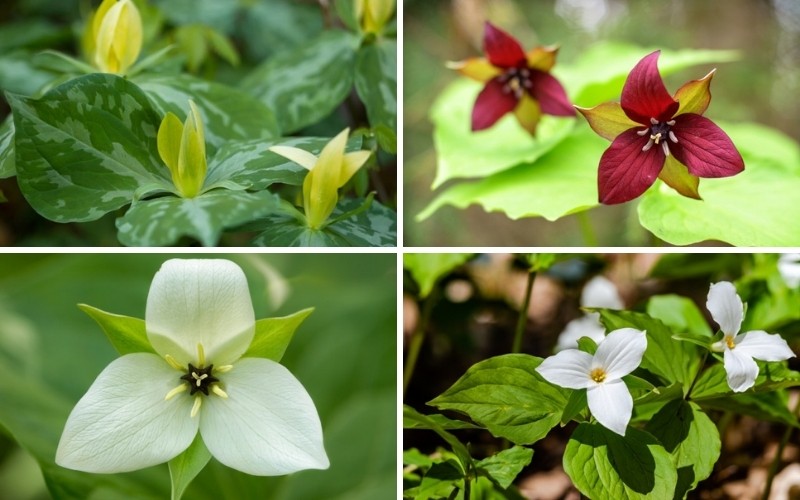
Trilliums (Trillium spp.) are unusual flowers that grow in many areas of North America. These lovely plants have three petals that can be narrow or wide, usually ending in a point. Pedicellate trilliums have a small stalk above the stem; sessile trilliums don’t have these pedicels and instead have the flower and sepals directly on the stem. These blossoms do have sepals, which look like pointy, narrow leaves, just under the petals in an alternating pattern (the petals and sepals together look like a six-petaled blossom). Both types of trillium flowers sit at the end of a stalk that leads down to three large, green bracts that look like giant leaves; the actual leaves are tiny and have been described as scale-like. Most of the plant is underground, and it spreads via rhizomes. Seeds are often spread by ants and mice, who eat a protein-based covering on the seed and then dump the seed, which germinates in that spot.
Some trilliums are endangered or illegal to pick in the wild, so purchase yours from a reputable nursery or garden center. These are long-lived perennials, with some plants lasting as long as a quarter of a century.
There are over 40 species, most of which are native to North America and grow in USDA hardiness zones 4-9. They prefer shady or partially shady conditions and moist, neutral to acidic soil. They tend to flower in early spring and are dormant much of the year. Note that flowers on plants you grow from seed may not appear for a good four to five years. Deer do like trilliums.
Note that trilliums tend to be fragile in that, if you pick a flower off the main plant, you remove the bracts and the plant’s ability to produce food from those bracts. The trillium can die – not just die back, but die – if you remove the flowers and bracts.
Trillium is one of those genera where some of the common names you find can refer to two different varieties of flowers.
When you search for trilliums for your garden, be sure you know exactly which varieties you’re getting by verifying the scientific name.
1. Wake Robin (also western trillium and Pacific trillium; Trillium ovatum)
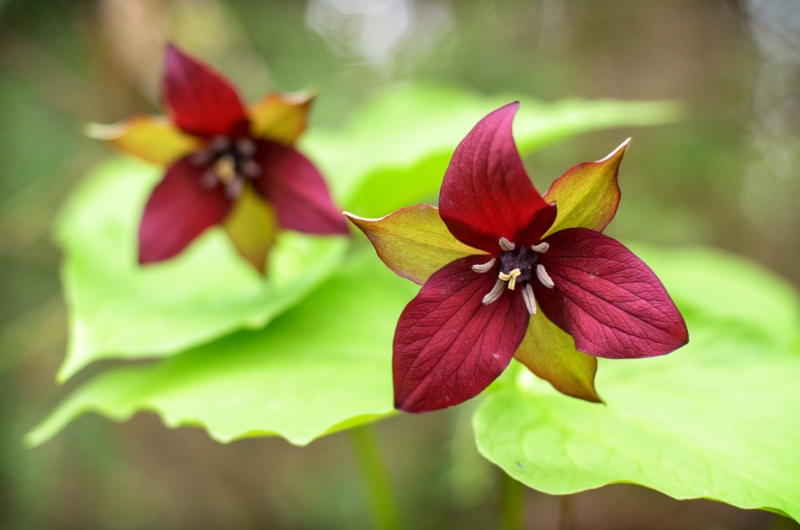
Three white petals, slender sepals, and mottled bracts form the wake robin or western trillium. This variety is native to the Pacific Northwest and is extremely common in the wild in Oregon. The flowers turn purple as they get older. Give it regular water in spring and almost no water in summer. It needs partially shady or full-shade conditions.
2. Prairie trillium (T. recurvatum)
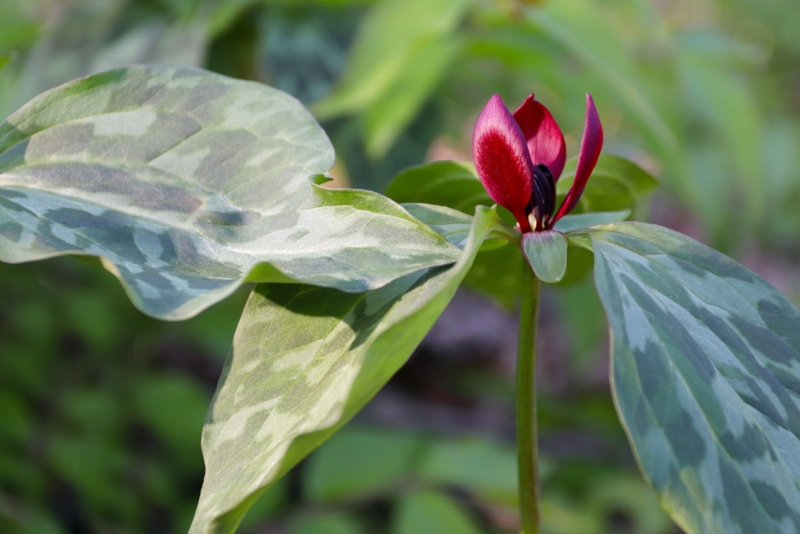
Generally limited to zones 5-8 but still possible to grow in zones 4 and 9, this short (grows to about a foot and a half tall) trillium has dark red to maroon petals that tend to stand up rather than fall back. It’s one of a few trilliums often called “wood lily.” You’re better off getting cuttings of this plant as it can be difficult to grow it from seed. The plant should die back by mid-summer.
3. Yellow trillium (T. luteum)
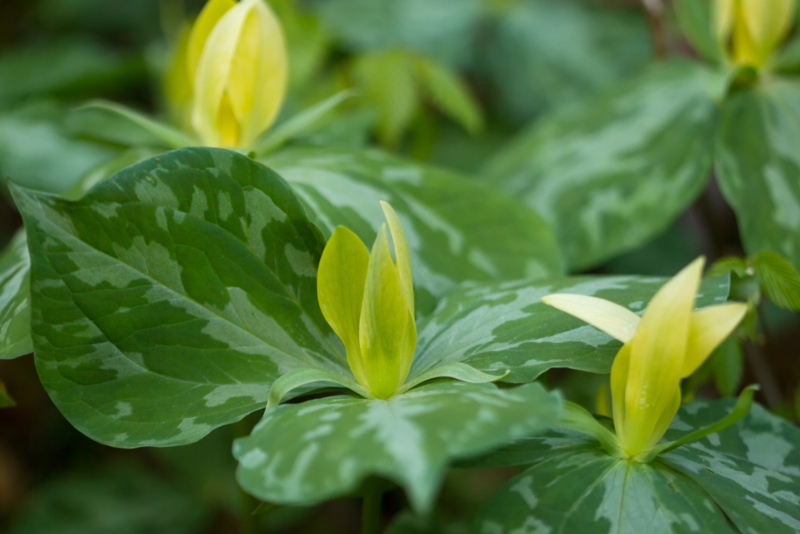
This is a sessile trillium, one where the petals and sepals seem to spring forth from the bracts instead of a pedicel. The petals are bright yellow and a cheery sight after a dreary winter. The blossoms often have a lemony scent, too. This variety is best grown in zones 4-8.
4. Blue Ridge wake-robin (also called propeller trillium and twisted trillium; T. stamineum)
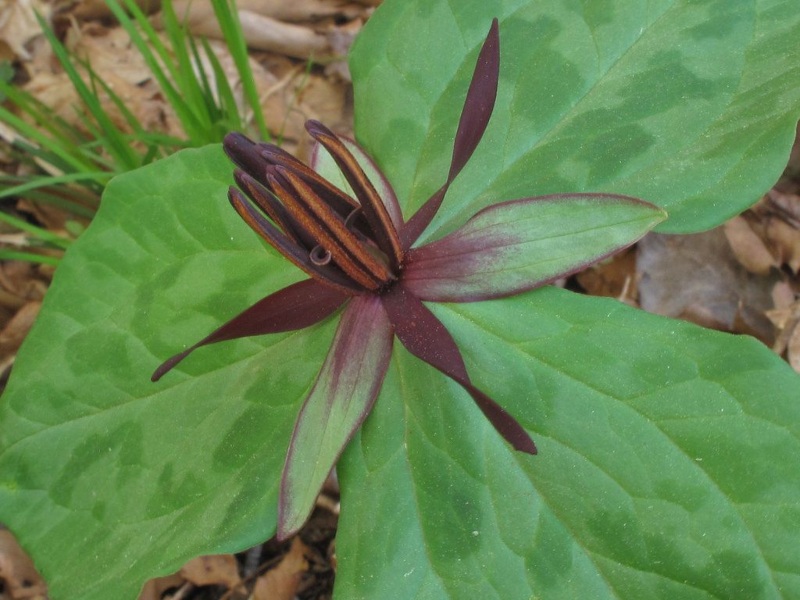
This is an interesting little flower for southern gardens that don’t have pets or kids running through them. Slightly twisted petals in brown, maroon, yellow, pink, or even black-red, sometimes with purple or yellow edges, rise out of the bracts. The flowers can have an odd odor as the plant wants to attract flies. Note that some people find the odor offensive, so this may not be the best if you’re sensitive to smells. This variety can be toxic, hence the no-pets-or-kids warning.
5. Southern red trillium (T. sulcatum)
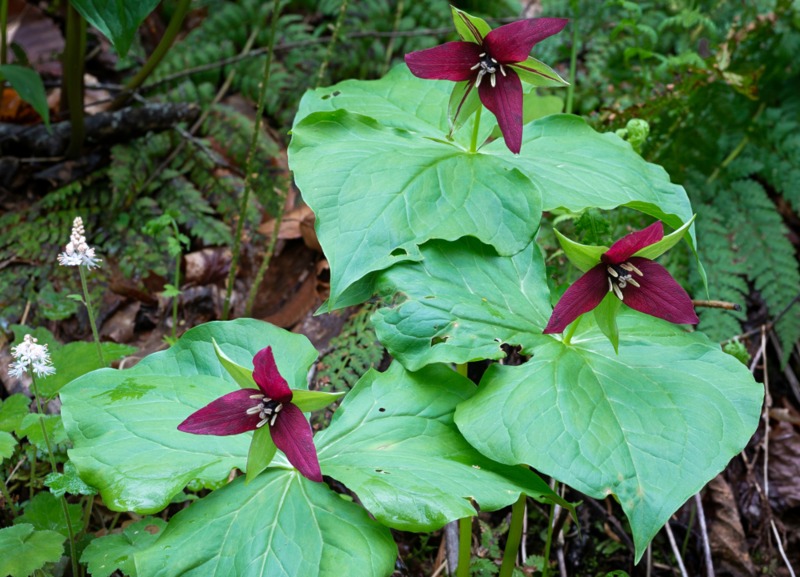
Plump white, maroon, purple, or yellow petals on this pedicellate variety are a bright sight in the mid-Atlantic and northern portions of the Southeast. This flower likes partially shady conditions and moist soil. This is a fairly tall variety, growing up to 3 feet tall. Acidic soil is best.
6. Great white trillium (also called white trillium, wood lily, and sometimes American wake-robin or western trillium; T. grandiflorum)
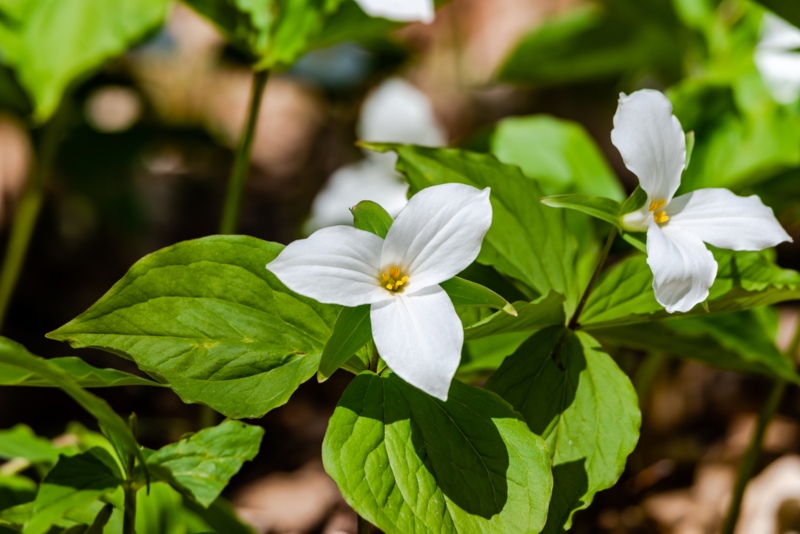
Also known as the state wildflower of Ohio, great white trillium has large white flowers with rounded ends. It likes regular water, and while it doesn’t grow that tall, the bright white petals, solid green bracts, and bright yellow centers make it a showstopper in the garden. It does require shady or partially shady conditions and well-draining soil. The flowers may become pinker with age.
7. Sweet white trillium (also known as jeweled wake-robin; T. simile)
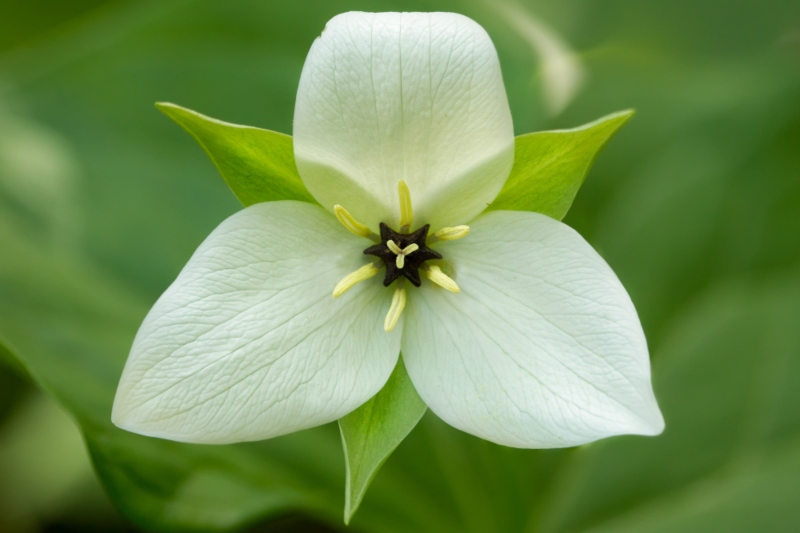
As you can guess from the name, the flowers of the sweet white trillium are usually white, although purple flowers are occasionally found. This is another southeastern trillium that can grow to about 3 feet, and it doesn’t need pruning. The flower’s scent is often described as that of green apples.
8. Wood lily (Also called Sweet Betsey; T. cuneatum)
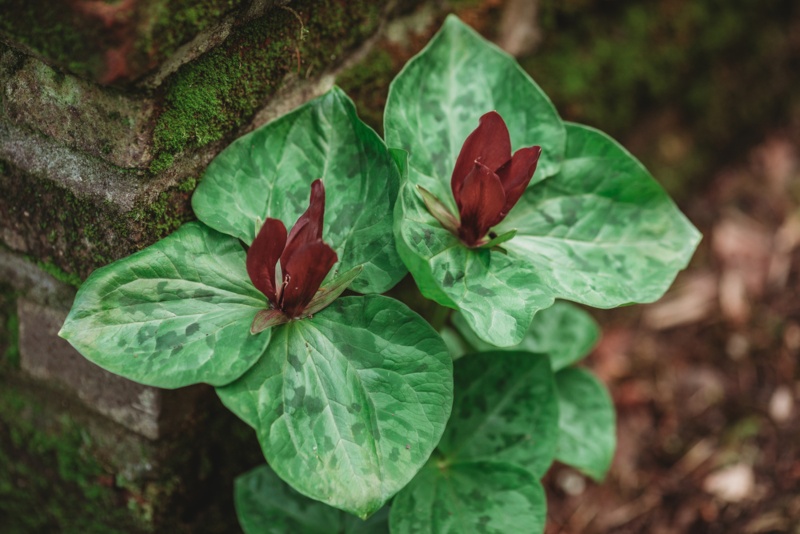
This is a shorter variety of trillium that has velvety dark red flowers, although you’ll also see yellow and orange varieties. It has large, mottled bracts and doesn’t need a lot of maintenance. Full shade is better than partial shade for this variety. The petals on some plants can be narrow, but you’ll also see nice, wide petals that are showy.




